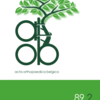Patient-specific instrumentation in total knee arthroplasty: a review of the current literature
total knee arthroplasty, limb alignment, patient-specific instrumentation, cutting block, conventional instrumentation
Published online: Aug 12 2023
Abstract
Total knee arthroplasty (TKA) is one of the most frequently performed interventions in the field of Orthopaedic surgery. Over the last decades the implantation technique has improved continuously. The majority of patients is satisfied with the clinical outcome of TKA. However in various clinical follow-ups, up to 20% of unsatisfied patients can be observed. Periprosthetic infection and aseptic loosening seem to be the most common reasons for failure. Malalignment has been discussed as a cause of aseptic loosening and often leads to revision surgery. In order to increase the precision of implant positioning and alignment, new technologies such as patient-specific instrumentation (PSI) have been developed. Since the introduction of PSI, multiple clinical studies have been performed analyzing the clinical and radiological outcome of TKA with PSI technique. This review covers the recent literature of PSI in respect to surgical accuracy, clinical outcome, time- and cost-effectiveness.
